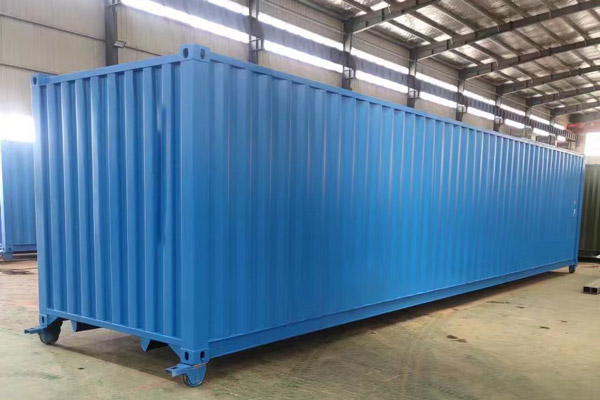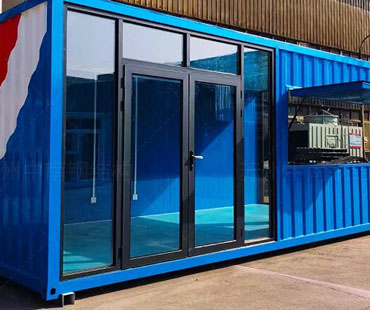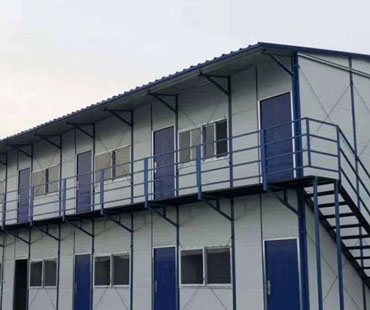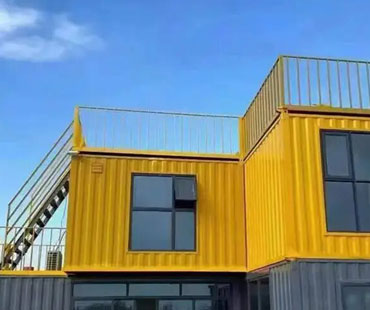As urbanization continues to accelerate, cities around the world are grappling with the challenges of population growth, housing shortages, and environmental sustainability. In response to these issues, innovative architectural solutions are emerging, and one of the most exciting developments in recent years is the rise of container buildings. Utilizing repurposed shipping containers, architects and developers are creating functional, sustainable, and aesthetically pleasing structures that are transforming urban landscapes. This article explores the benefits, challenges, and future potential of container buildings in modern cities.
The Benefits of Container Buildings
1. Sustainability and Environmental Impact
One of the most significant advantages of container buildings is their sustainability. By repurposing used shipping containers, architects reduce waste and minimize the environmental impact associated with traditional construction methods. This approach aligns with the principles of recycling and upcycling, promoting a more circular economy. Additionally, containers are made from steel, a highly durable material that can withstand various environmental conditions, further extending the lifespan of the structure.
2. Cost-Effectiveness
Container construction can be more cost-effective compared to traditional building methods. The availability of surplus shipping containers often leads to lower material costs, while reduced construction time contributes to overall savings. With modular designs, container buildings can be assembled quickly, allowing developers to meet housing demands more efficiently. This cost-effectiveness makes container buildings particularly appealing for affordable housing projects in urban areas.
3. Versatility and Adaptability
Shipping containers offer remarkable versatility in design and functionality. They can be stacked, arranged, and modified to create various types of structures, from single-family homes to multi-story apartment complexes and commercial spaces. This adaptability allows architects to experiment with innovative designs that cater to specific urban needs. Moreover, container buildings can be easily relocated or expanded, making them suitable for temporary installations, pop-up shops, and modular housing solutions.

Innovative Designs Shaping Urban Landscapes
1. Mixed-Use Developments
Many urban areas are embracing mixed-use developments that combine residential, commercial, and recreational spaces. Container buildings are ideal for these projects due to their modular nature. For instance, a series of stacked containers can create affordable housing units above retail spaces, fostering vibrant communities. Cities like Amsterdam and Los Angeles have successfully implemented container mixed-use developments that enhance urban life and promote walkability.
2. Creative Public Spaces
Container buildings are also being used to develop innovative public spaces that encourage community engagement. Parks, art installations, and cultural centers constructed from shipping containers have become popular in urban settings. These spaces not only provide recreational opportunities but also serve as platforms for local artists and entrepreneurs. For example, the Container Park in Las Vegas is a creative retail and entertainment hub formed from repurposed shipping containers, showcasing how such structures can breathe new life into urban areas.
3. Emergency Shelters and Disaster Relief
In times of crisis, container buildings can be rapidly deployed as emergency shelters and disaster relief housing. Their modular nature allows for quick assembly and adaptability to various contexts. Following natural disasters, container homes have been utilized to provide immediate housing solutions for displaced individuals. This flexibility highlights the potential of container buildings to address urgent housing needs in urban settings.
Despite their numerous advantages, container buildings face several challenges that must be addressed. Building codes and regulations can vary significantly from one municipality to another, and developers must navigate these complex frameworks to ensure compliance. Additionally, retrofitting containers for insulation, plumbing, and electrical systems can be more complicated than traditional construction methods.
Furthermore, the aesthetic appeal of container buildings can be a double-edged sword. While some admire their industrial look, others may view them as unattractive or out of place in certain urban environments. To overcome this perception, architects are increasingly focusing on creative designs that integrate containers harmoniously into their surroundings, using landscaping and innovative facades to enhance visual appeal.
As cities continue to evolve, the future of container architecture looks promising. With growing awareness of environmental sustainability and the need for affordable housing solutions, container buildings are likely to gain further traction in urban planning. Advancements in construction technology, such as 3D printing and modular design innovations, will continue to enhance the potential of container buildings.
Moreover, as cities become more densely populated, the demand for flexible, adaptable spaces will increase. Container buildings offer a viable solution to meet these demands while promoting sustainable practices. By embracing this innovative approach to architecture, urban areas can transform their landscapes, create vibrant communities, and address pressing social and environmental challenges.
Container buildings are more than just a trend; they represent a significant shift in how we approach urban development. By leveraging the benefits of sustainability, cost-effectiveness, and adaptability, these structures are transforming cityscapes and redefining the concept of modern living. As architects, developers, and communities continue to explore the potential of container architecture, urban landscapes will undoubtedly become more dynamic, inclusive, and resilient. The future of our cities may very well depend on the innovative use of shipping containers, pavingthe way for a more sustainable and adaptable urban future.


